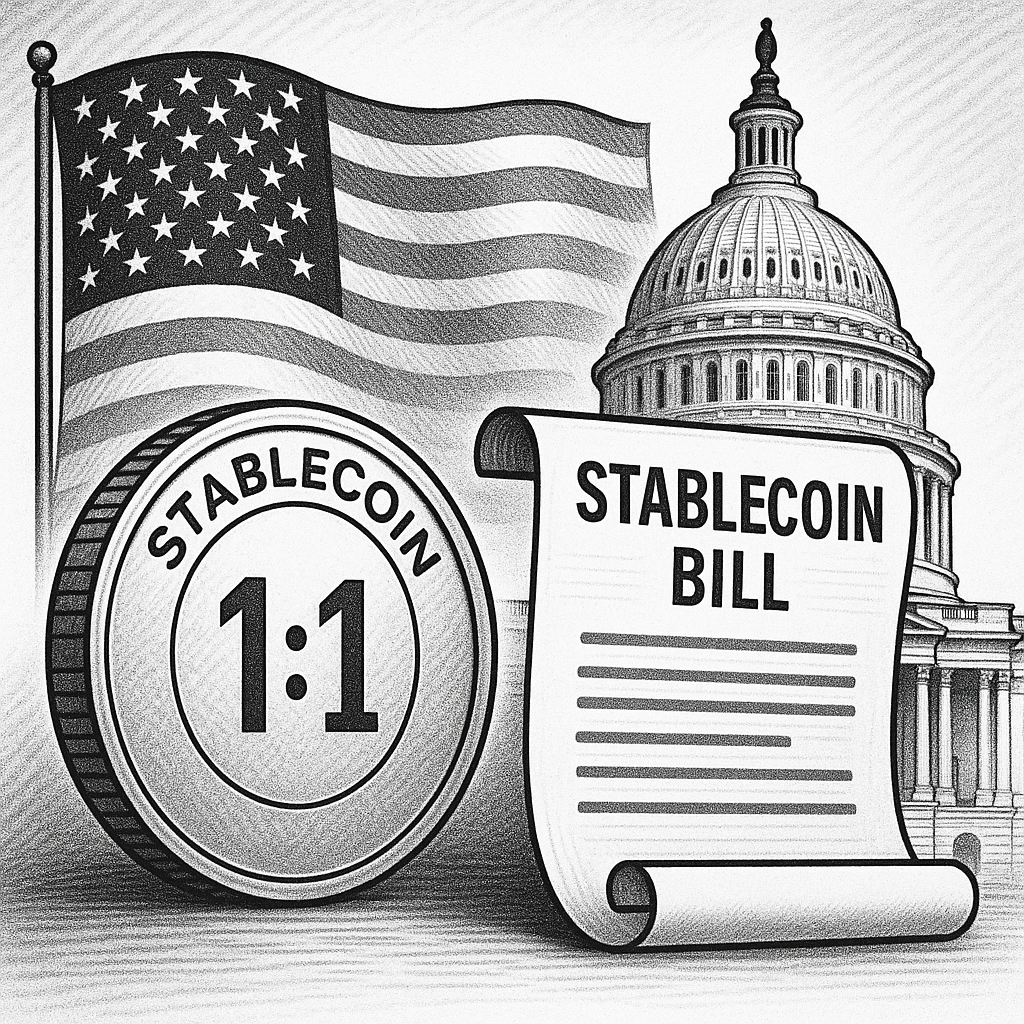The Trump Administration, positioning itself as pro-crypto, is delivering on its promise to make the U.S. the crypto capital of the world. This began with the establishment of the U.S. Bitcoin Reserve and continues with a bold push for cryptocurrency adoption to safeguard the U.S. dollar’s status as the world’s reserve currency.

The Genius Act
Unless you’ve been burying your head in the “fiat sand” like an ostrich, hoping the crypto wave will fade, you’ve likely heard of the Genius Bill. Passed with bipartisan support and 68 votes in the Republican-controlled Senate, the bill codifies the Trump Administration’s preference for stablecoins over central bank digital currencies (CBDCs). This has spurred growth for stablecoin issuers like Circle, the company behind USDC. The legislation brings much-needed regulatory clarity to the crypto industry, cementing America’s position as a global crypto leader.
Key Features of the Bill
- Establishes issuer requirements for liquid assets, reporting, and anti-money laundering (AML) compliance and 1:1 reserves.
- Introduces a “Payment Stablecoins” classification, avoiding categorisation as securities or commodities.
- stablishes a dual-licensing framework, allowing stablecoin issuers to operate under either a federal charter or a state regime approved by the Treasury.
Stablecoin as a Monetary Disruptor?
The regulatory framework provided by the Genius Act sets the stage for stablecoins to become a transformative force in global finance, much like promissory notes replaced precious metal coins. Stablecoins are poised to replace traditional “money” as a delivery mechanism. Their value isn’t tied to the medium itself, whether promissory notes or stablecoins but to the assets backing them. Historically, money was asset-backed, typically by gold, but post-war economic pressures and debt shifted fiat currencies to rely on a nation’s economic strength and centralized banking systems. This allowed central banks to print more money, driving inflation. A stablecoin like USDB, available on platforms like Moneybrain, mirrors the value of a fiat dollar, often backed 1:1 by fiat reserves tied to the strength of the U.S. economy, military, and human capital. The value remains unchanged; only the delivery mechanism has evolved. The shift away from the gold standard during the Reagan era was a far greater change than the introduction of stablecoins, which simply modernize money for a Web3 digital age. Stablecoins enable faster transaction settlements, bypass banking fees, and facilitate borderless money transfers.
